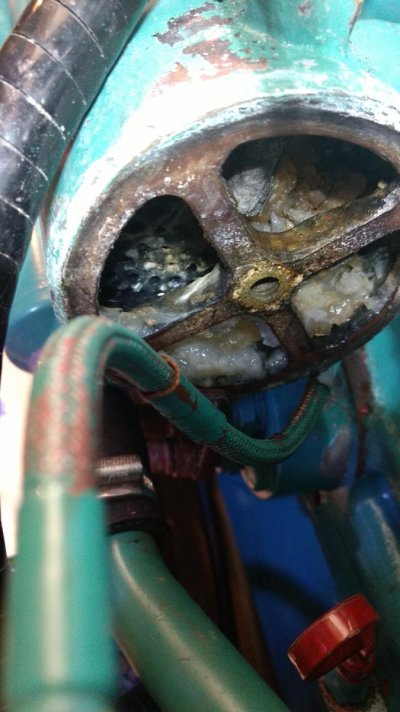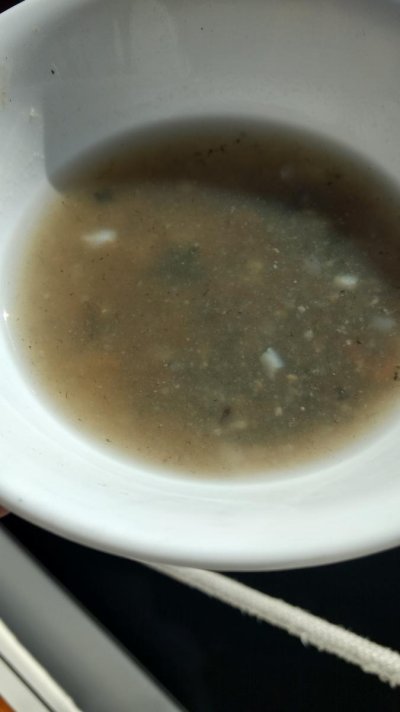Choices
Guru
- Joined
- Apr 16, 2018
- Messages
- 898
- Location
- Montgomery, Tx
- Vessel Name
- Choices
- Vessel Make
- 36 Grand Banks Europa
Boat has 135 Lehman.
It has two plate zinc's on the stern, one on prop shaft, two on bow thruster, one pencil zinc on heat exchanger.
I regularly find the zinc almost gone in the heat exchanger. Could be cause it's smaller.
The issue is all that trash in picture at end of heat exchanger where the flow reverses. This a jelly/ malt o meal consistency around where zinc resides.
Trash is not in system, cooler before this will catch impeller pieces.
Problem has occurred in multiple Marina's, and could be from other boats. I am making a galvonic isolator for the boat that is movable to each recepticle.
Any ideas?
It has two plate zinc's on the stern, one on prop shaft, two on bow thruster, one pencil zinc on heat exchanger.
I regularly find the zinc almost gone in the heat exchanger. Could be cause it's smaller.
The issue is all that trash in picture at end of heat exchanger where the flow reverses. This a jelly/ malt o meal consistency around where zinc resides.
Trash is not in system, cooler before this will catch impeller pieces.
Problem has occurred in multiple Marina's, and could be from other boats. I am making a galvonic isolator for the boat that is movable to each recepticle.
Any ideas?


